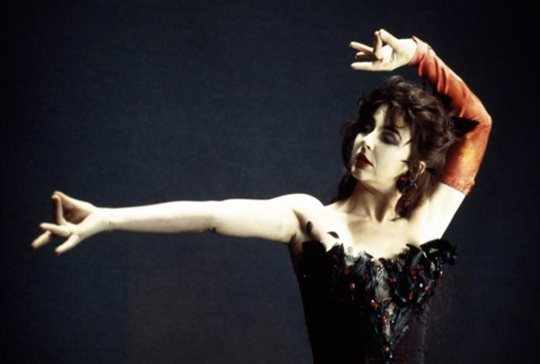Moving: On the Cinema of Kate Bush
By Yasmina Tawil
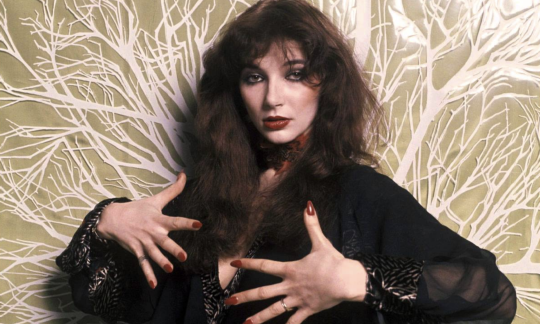
“Experimenting with film is exciting to me. It feels like it has purpose.”
-Kate Bush, Egos and Icons, 1993
Kate Bush has always been more than your average musical artist. It’s not ordinary to have a chart-topping single when you’re 19-years-old, let alone a number-one hit about a classic literary text of all things. From the onset, she was more than hooks. She was a wizard of merging artistic interests, folded together into a stunning presentation of everything she could offer as an artist. Bush is never satisfied, but geniuses so rarely are, and when she masters one art form, she moves onto another with a ravenous appetite for perfection. In her art she has combined music, dance, mime, literature, fashion, and cinema into one. Her art is overwhelmingly dense and, from the beginning, few could truly reckon with her talent. Her music videos and concert television specials, in particular, are the purest distillation of her skills, and in cinematic terms, share a kinship with the likes of Maya Deren, Jacques Rivette, François Truffaut, and Terence Fisher.
In an interview with a British Television station from 1978, Bush recalled a moment in her childhood which would have a lasting effect on her psyche and her engagement with art. She was struck by an image from a television adaptation of Wuthering Heights. She caught the last five minutes of it and, without context, the image of a ghostly Kathy (the protagonist of the novel) haunted her. It was an extreme close-up, with Kathy begging for a window to be opened so she could enter her old house. From her earliest inclinations as an artist, she was first and foremost interested in visual imagery. Bush would also say in this interview that she wanted to write a song about the image that had stuck with her, but she needed to read the book first so she could “have context and get the tone right.” What would become of this collision course of image, text, and music is her first number one single in Britain, “Wuthering Heights.” The music video that followed would be one of the best the genre has ever seen.
There are numerous videos for the “Wuthering Heights” single, but two are widely recognized as the canonical examples in Bush’s oeuvre: The red dress video and the white dress video. Both present different formal takes on the single, and both are altogether dynamic in their connection to the song. The first of these, the white dress video, is shot on a sound stage with golden, harsh lighting, emanating from Bush’s body as she does her interpretive dance of the song. She makes big, swooping gestures with her limbs and has wide Clara Bow-like eyes. The image is split into two separate sections to create one fluid image—one a close-up so you can see her facial reactions to the song, the other with a wider scope so you can see the gestures she’s making to emphasize certain lyrics and passages of the song. Occasionally time-lapse photography is used to give off the illusion that Bush’s body is splitting into parts as she moves like Da Vinci’s “Vitruvian Man.” Cinematically, this video shares DNA with some of the earliest short films, more specifically the Serpentine Dance experiments that many different directors used to showcase how images could move in a certain way, but updated to aesthetics that would be more commonly used in early experimental music videos. These techniques were used to better capture singular movement and siren, ghostly feminine images, like in Bruce Conner’s groundbreaking video for “Breakaway,” starring Toni Basil. It would be startling in its own right if it were the only video for “Wuthering Heights,” but Kate Bush did one better when she donned the red dress.
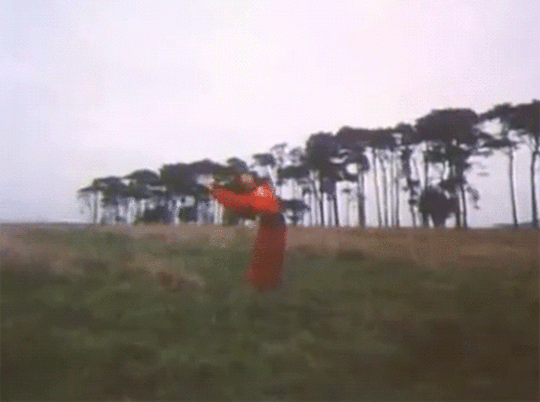
The red dress video is overwhelming, shot in 4:3 and comprised almost entirely of medium shots to accentuate the visual language coming from the entirety of Bush’s body. Where the white dress video uses flashier techniques to evoke a very specific luminescent feeling, here the cinema is coming completely from her interpretive dance, as she uses the entirety of her body as sign language to emphasize the lyrical and tonal content of the song. The dance is note for note the same as the one in the white dress video, but the camera almost never pulls away here beyond the occasional close-up shot of Bush’s own facial acting, which in and of itself is also presenting the narrative of the song through her expressive, maximalist acting. The video evokes an almost mythic, idealized England of deep greens, where ghosts and ghouls roamed the land alongside the living. It’s a land of beautiful old gardens, and cottages (much like the one she grew up in), but the beauty is unnerved by a cerebral pull towards death, and in “Wuthering Heights,” that very nature is in the soul of the video. It’s set in an old forest, intensely green, but beset with fog, and Bush breaks the image with her stark, loud crimson dress. The wider framing allows us to see exactly what she’s wearing and how she moves. The medium lensing is reminiscent of many of Jacques Rivette’s high fashion pictures like Duelle, Noroit, and ironically enough his own adaptation of Wuthering Heights, where the outfit was always presented in full from head to toe and worked as an extension of the characters. In this video, the red dress is worn as a means of seduction. “Let me into your window,” Bush beckons, pulling her arms in closer. She’s speaking for the ghost of Kathy, begging to get out from the cold, but in addition to the narrative conceit of the song, it also works as a device of temptation for an introductory single. “Let me into your window” could just as easily be “Let me into your lives,” and after “Wuthering Heights,” England and the rest of the world obliged.
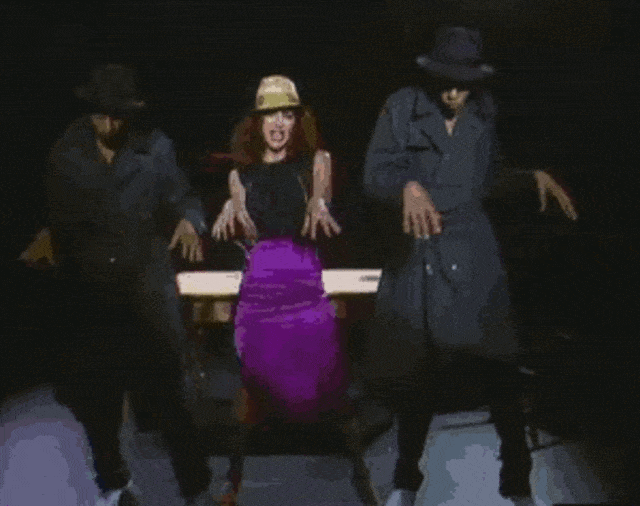
The zenith of Kate Bush’s music video career was between 1978 and 1980, when her videos were barebones soundstage productions, for the most part, capitalizing on her ability to dance. “Them Heavy People” was the follow-up music video single to “Wuthering Heights,” and again the video didn’t disappoint. Shot in one continuous take on a sound stage, Bush is projected as a Humphrey Bogart figure if Humphrey Bogart were a pendulum of hips. Bush wears a tilted fedora with bravado, and pairs that up with a magenta knee-length skirt. She’s accompanied by two back-up dancers who follow her throughout the narrative of the song. Here, the music is about Bush learning to dance. (“They break down my body. I feel like it’s killing me. What a lovely feeling.”) Throughout, these two back-up dancers engage Bush in a dance of combat before getting Laurel and Hardy-esque or WWF by bashing chairs into each other before the song concludes. Bush’s greatest skill as a choreographer is interpreting the lyrical content of her own songs and painting a picture with her body on top of the image we are already seeing, creating a kaleidoscope effect in which different cinematic gestures are moving in and out of one another to create a full unified statement. Bush’s auteurism, if you will, is how she moves her body in a way to create a narrative surrounding the song she’s already written. With enough time, she would soon move behind the camera as well, but director Keith “Keef” MacMillian gave her earliest dance videos the space necessary to let Bush tell the story.
Her video for “Hammer Horror” works for the same reasons that “Wuthering Heights” and “Them Heavy People” do, but with the additional context of moving into genre cinema through dance. This time, her soundstage is shrouded in darkness with a blue spotlight on Bush and a masked man in an an all-black body suit that renders everything but his uncovered arms nearly invisible. Bush is wearing a low-cut, slinky, sequined black dress, complete with the vampiric cleavage of the eponymous studio vixen. It’s equal parts vampire film and a dance exhibition, as Bush taps into the recently bankrupt Hammer Pictures’ ethos of blood, boobs, and gothic chills. The man who dances with Kate acts as a pseudo-villain, always lurking behind Bush’s frail damsel-in-distress in the verse stanzas before she erupts into a violent demoness herself in the loud, plunging chords of the chorus. Bush rarely had time for hard rock, let alone heavy metal, but this could easily be described as such, with its horror-movie lyrical content and killer riffage. This video, like much of her earliest videography, is shot in one take, but here the camera moves with Bush to create movement alongside her body, making it one of the more visually ambitious works “Keef” did in collaboration with Bush. In particular, when the camera idles side to side in an extreme close-up on Bush’s back as she alludes to running, it gives off the illusion that we’re sprinting too. When Bush turns and the camera captures her cold, horrified glare, it moves us into the third act of the horror film where the dance centers entirely around choreography of her neck. The neck is an essential image in any horror film involving vampires, but it was practically one of the Ten Commandments in Hammer cinema. The closing image of the video is Bush dangling in the arms of her faceless villain, head tilted back, with her neck exposed completely. She’s faceless at this point, and the man takes his seemingly gigantic left arm and runs it down the nape of her neck slowly before clamping down completely. The camera zooms in a little and a perfect horror-movie image closes the video before cutting to black. It’s an image both sexual and horrific, the lifeblood of vampire cinema.
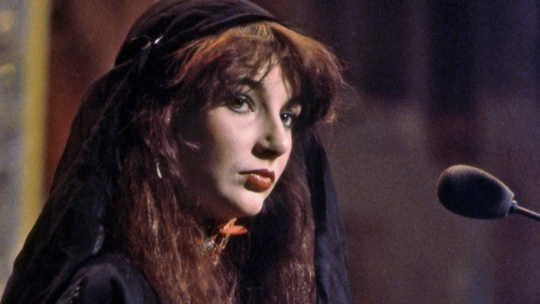
It was around this time, 1980, when Kate Bush started shifting her ideas of what she wanted to convey in music videos into something more traditionally narrative-based, with a less heavy reliance on interpretive dance and pantomime. In this period, she made “The Wedding List,” as an homage to the Truffaut film The Bride Wore Black, about a wronged bride who sought revenge for the desecration of her romantic life. Additionally, there was the Jean-Luc Godard-influenced experimental video for “Another Day,” with Peter Gabriel, which showed the unravelling of a couple by using frame-within-a-frame imagery to convey two separate stories of past and present simultaneously. Bush’s best video of this time period, however—and one that births a new period of her music video career—is her apocalyptic science fiction short for the song “Breathing.” The song saw a shift in Bush’s interests from her pop-inflected, piano-based dance music to something harder and altogether more experimental. It was a shift that would characterize her career for the next 30 years.
In the video for “Breathing,” Bush represents a fetus, begging and pleading to be given a chance to live and be with her mother in the outside world in the wake of nuclear annihilation. It’s a song that has deep ties to maternity, childbirth, and pregnancy, and when compared with the majority macho considerations of science fiction, it becomes something complex and unique within the genre. The video is matter-of-fact in its simplicity, but deeply moving in what the images convey about the lyrics. Once again, it’s mostly shot on a soundstage, where Bush is inside of a plastic orb, with deep amber lighting underneath her frail frame. She’s wearing a sheer outfit with white trim to portray the relative innocence of the fetus, and she spends the majority of the video either in the fetal position or pushing the orb back and forth to represent the kicking or pushing a mother may feel while pregnant. The words “Breathing my mother in” are a gently affecting and deeply harrowing sentiment when set against the context of nuclear war, and the video becomes a barrage of dissonant images. Our greatest possibility for love (giving someone life) and our greatest possible evil (the nuclear weapon) collide to create a pure statement on the human condition. When the mother’s water eventually breaks and Bush leaves the womb, what follows is a slow-motion dip into experimental imagery of one girl, bathed in shadow, peaking out from underneath a cloudy image reaching towards the reds, oranges, and bright lights of what she hopes will be a welcoming world. Only here she’s greeted with an atomic explosion that sinks into the earth in the shape of Kate Bush’s silhouette. This is a woman’s story of creation caught in the crossfire of what man creates and mourning the death of a world she knows will inevitably fall. It’s a complicated, resonant question for any time, but made even more evocative by the terror of a supposedly inevitable nuclear war between the United States and Russia in the 1980s. In terms of cinema, it’s probably the greatest exhibition of pregnancy and childbirth this side of Stan Brakhage’s “Window Water Baby Moving.”

In an interview for British Television series, Egos and Icons, Kate Bush stated that her music video for “Running Up that Hill” was her way of saying goodbye to the pantomimed, interpretative dance of her earlier music career in favor of dancing that was more serious and elegant. The choreography of the video would be a pure dance, stripped of theatricality, with its footing in a bolder narrative sophistication. For this video, she brought in choreographer Diane Grey to take the reigns in constructing a dance around the narrative of the song, about a woman who wishes her partner could see things through her eyes, because it would fix their problems. Bush’s work has always been heavily gendered in a feminine context, but there’s a deliberate decision here to present two bodies working in jarring competition with one another while being punctuated with bursts of synchronicity, as Bush and her male partner move in and out of one another’s grasp and bodies with a fluid grace. The dance is the most complicated and daring of her music video work, while still gravitating toward a narrative interest in reflecting the lyrics of the song. But what follows in all of its beautiful lifts, cradles, and slides is a dance of two people starkly different from one another finding occasional momentary symbiosis. It’s a melding of both the masculine and the feminine into one perfect image, only for it to slip away.
Bush’s work has always highlighted the female form, with real emphasis on her body as it relates to its present state in the world of the song. It’s reminiscent of the work of Maya Deren, whose work frequently foregrounded womanhood in the deep waters of experimental cinema. Deren’s “At Land” bears stark similarities to “Running Up that Hill” in this regard, where Deren’s body is more like a curving liquid at one with an elemental earth rather than in man’s creation. In the Deren short, the ocean moves in and out, which is a dance in and of itself, and the woman (played by Deren) enters into a chess game that’s representative of her own push-and-pull conflict with being a woman in a man’s world. Her body, ever present and always in frame, sometimes looking toward the sea as if the murky deep would offer a tranquility, and in Bush’s video, she reaches toward a sun, maybe even to God, to bring her closer to understanding the conflict within her own life. Fittingly, Deren’s short ends with her running up a hill.
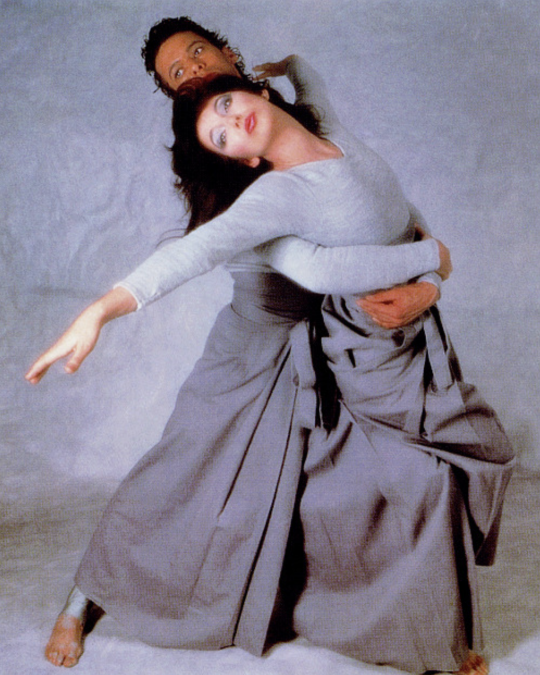
Kate Bush continued to stray more and more towards cinema as she raced through the ‘80s and become close friends with Terry Gilliam, who introduced her to many people in the industry who helped her put together the funding needed to make her first feature, 1993’s 50-minute The Line, The Cross and the Curve. The film is a riff on The Red Shoes (she made an album of the same name), and even includes a thank you to Michael Powell. It’s a shaggy affair, with all of her eccentricities, strengths, and weaknesses laid bare. It’s most apt comparison point is probably Prince’s Graffiti Bridge in the sense that it is both the most Kate Bush a project could possibly be, full of quirks that are very take-it-or-leave-it depending on how big of a fan you are of the music. Bush’s most base filmic interests are Gilliam with a dash of Jean Cocteau and Twin Peaks-era David Lynch. Much of the visual imagery in the film is reminiscent of the Black Lodge, with an obsession over red curtains, flames and mirrors. The greatest weakness of the film is that it would obviously draw unfair comparisons to Powell and Emeric Pressburger’s 1948 masterpiece and no film under any circumstances could live up to those lofty expectations. But that’s Kate Bush: She’ll aim for heaven even if it means her own hell. Nevertheless, The Line, The Cross and the Curve is not without some truly breathtaking moments, such as the callback to her earlier soundstage videos of the late 70s in the yo-yo’ing “Rubberband Girl.” In that segment, a man dances behind Bush, serving as her shadow, bobbing her back and forth to create a dance where Bush’s body personifies a rubber band. The title track features a breathtaking choreographed moment between her and the man who taught her to dance, Lindsay Kemp, while dazzling sequins splash all over the screen as Bush and Kemp dance around floating multi-colored fabrics. The sequence, set to “Moments of Pleasure” is the film’s absolute high point, with Bush merely twirling, as if wound up from her back like a music box ballerina. Throughout this sequence she’s covered in falling snow, but it looks more like bursting starlight and against all this black, she’s adorned in hellfire red, singing her heart out. It’s a startling image, one that takes its time and is deeply moving in its straight-forward theatricality. Bush considers the film a major disappointment, but underneath her own perfectionist tendencies, anything less than equaling Powell and Pressburger would have been a failure.
Kate Bush’s music video library is epochal, constantly rewarding in its zealous fusion of artistic forms, and her fundamental understanding that cinema, movement and dance are intertwined. When watching feature films, we tend to point out whenever a scene has great music accompanying it, whether it’s Claire Denis’ use of “The Rhythm of the Night” in the disco denouement of Beau Travail or the montage set to “Layla” in Martin Scorsese’s Goodfellas, but why are music videos so vastly ignored when we canonize movies? If there’s to be a music video canon, then it’s important to understand what makes a music video cinema in the first place. Through dance, rhythm, and movement, music videos truly find their identity in the lexicon of cinema, and with Kate Bush in particular, she immerses her entire body into that very idea. Stop Making Sense is widely considered the greatest concert film of all time, thanks in part to Jonathan Demme’s understanding of rhythm and how he captured the jittery quality of David Byrne’s dancing. If the same can be extended to the work of music videos, then the entire world of images bursting out of Bush’s body time and time again must be holy and it must be considered cinema.
